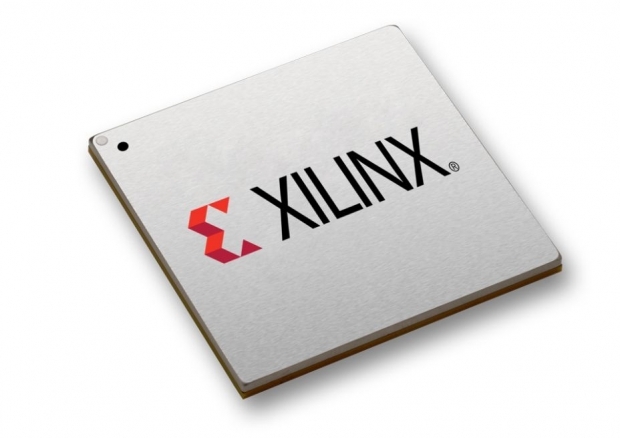Revenues of $828 million for the fourth quarter of the fiscal year 2019 was four percent up from the prior quarter and up 30 percent year over year. The strategy is paying off.
GAAP net income for the fiscal year 2019 was $890 million, or $3.47 per diluted share. Non-GAAP net income for the fiscal year 2019 was $892 million, or $3.48 per diluted share. GAAP net income for the March quarter was $245 million, or $0.95 per diluted share. Non-GAAP net income for the March quarter was $242 million, or $0.94 per diluted share.
"Fiscal year 2019 was truly an exceptional year for Xilinx. For the year, we exceeded $3 billion in annual revenues for the first time and posted 24% growth from last year, driven by Advanced Product revenues which grew 40% year over year. In addition, we demonstrated strong profitability by posting over 30% growth in both non-GAAP operating income and non-GAAP diluted earnings per share. We are executing to our strategy and focusing on growth across our portfolio as we continue our transformation to a platform company", said Victor Peng, president, and chief executive officer, Xilinx.
Communications led the way representing 41 percent of the revenue in FY Q4 2019 led by the Industrial, aerospace, and defense sectors with 27 percent. Data Center and TME accounted for 18 percent. Automotive, broadcasting and consumer markets contributed 14 percent in the quarter. Communications grew 74 percent year to year - thanks to 5G - while automotive, broadcast, and consumer grew 20 percent year on year.
Asia Pacific contributed 47 percent of the mix, the US 27 percent, Europe with 18 and Japan with eight percent.
Xilinx advanced products contributed to a whopping 68 percent of Q4 FY 2019 with a growth rate of 55 percent. The Advanced products include high margin parts including Alveo, UltraScale+, UltraScale and 7-series products.
Core product contributed with 32 percent of the split and declined four percent year over year. The Core products include Virtex-6, Spartan-6, Virtex‐5, CoolRunner‐II, Virtex-4, Virtex-II, Spartan-3, Spartan-2, XC9500 products, configuration solutions, software & support/services.
Driven by 5G and automotive
Communication revenue increased by 34 percent driven by 5G is an indication of things to come. Operators around the world are upgrading their networks and release 21 of 5G is just around the corner. Wireless strength resulted from momentum across both radio and baseband applications with OEM customers; primarily due to 5G deployment in South Korea and preparation for 5G deployment in China.
Back at MWC in February 2019, Xilinx and Samsung jointly enabled the world's first 5G NR commercial deployment. Xilinx also expanded its breakthrough RFSoC portfolio to the full sub-6GHz spectrum support required for 5G.
Data Center and Test, Measurement & Emulation (TME) revenues grew double digits during the fiscal year 2019, driven by the Data Center business which grew 40%. Xilinx demonstrated strong design-win momentum across hyperscalers, enterprise customers and partners and increased the cumulative number of Xilinx ISV partners to over 500.
Xilinx continued to enable key Xilinx platform and Alveo partners through its corporate venture initiatives, doubling ecosystems investments year over year to more than 20 portfolio companies addressing critical applications in a variety of areas including data analytics, financial computing, and video streaming acceleration.
Data center first, AI and 5G
As reported earlier, Xilinx announced that it has entered into a definitive agreement to acquire Solarflare Communications, a provider of high-performance, low latency networking solutions for customers spanning FinTech to cloud computing, further accelerating its "Data Center First" strategy. This acquisition will enable Xilinx to combine its industry-leading FPGA, MPSoC and ACAP solutions with Solarflare's high-speed network interface card (NIC) technology and Onload application acceleration software, to enable a new converged SmartNIC platform.
Xilinx Automotive business grew double digits reflecting the Company's leading and growing position in Advanced Driver Assist Systems (ADAS). Most recently, Daimler showcased its AI solution in the new Mercedes GLE Sport Utility Vehicle that is powered by Xilinx products. Also, ZF Friedrichshafen AG, a global leader, and Tier-1 automotive supplier announced a strategic collaboration in which Xilinx technology will power its highly advanced AI-based automotive control unit to enable automated driving applications. Further, BYD in China started mass production of front-camera ADAS technology using Xilinx SoCs.
The automotive market is unique as most people never heard of big names including ZF Friedrichshafen or BYD in China. BYD's decision to use ADAS front cameras using Xilinx SoCs is significant as Xilinx has an over the air hardware FPGA based camera technology that can add new algorithms months and years after the camera got deployed to the vehicle. This sounds like a game-changing technology.
Industrial, Aerospace & Defense, as well as Automotive, Broadcast and Consumer primary end markets, grew to new sales records, with each market supported by a robust and diversified portfolio. Industrial, Aerospace & Defense strength was driven primarily by Industrial growing double digits. Revenues from Automotive, Broadcast, and Consumer were driven by double-digit growth from each of the businesses.
Xilinx expects $835M - $865M in financial year Q1 2020 with 66 percent gross margin but since the momentum of 5G will continue for a while, ACAP can help accelerate many neural networks in AI, automotive is doomed to get increased ADAS support, the company is well prepared for the future. FY 2020 is when we get to see incredible Versal programmable accelerator that is set to put some pressure on Nvidia in the AI data center training market and more data center and automotive gains.




